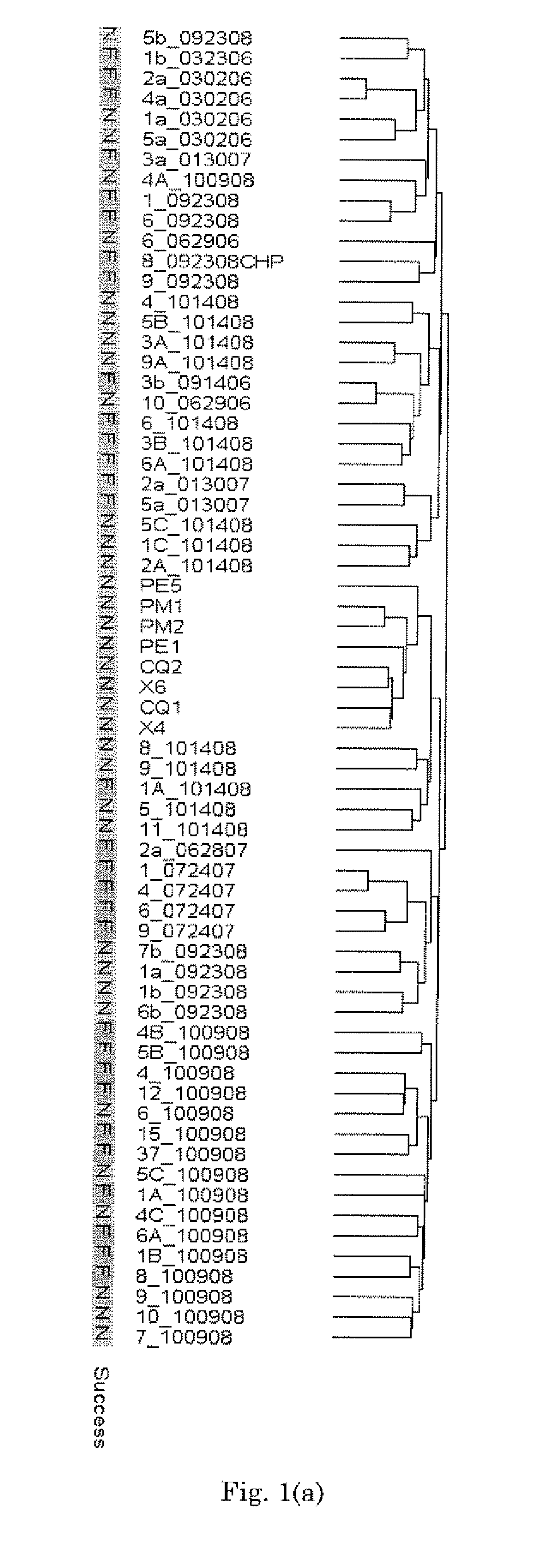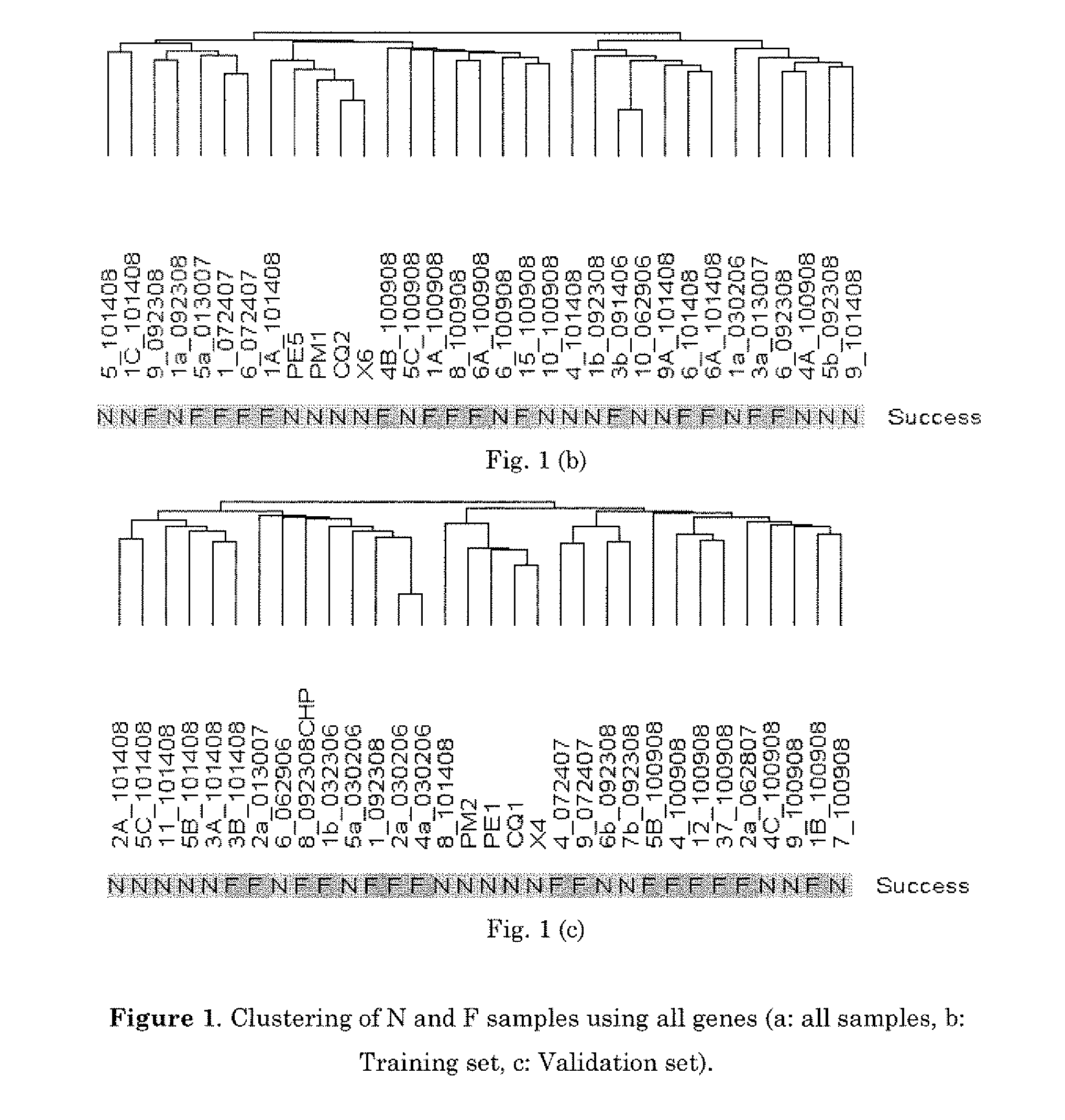Genes differentially expressed by cumulus cells and assays using same to identify pregnancy competent oocytes
a technology of cumulus cells and cumulus cells, which is applied in the field of cumulus cells differential expression and assays using same to identify pregnancy competent oocytes, can solve the problems of low success rate of assisted reproductive technology (art), low success rate of in vitro fertilization, and inability to accurately predict the competence of embryos
- Summary
- Abstract
- Description
- Claims
- Application Information
AI Technical Summary
Benefits of technology
Problems solved by technology
Method used
Image
Examples
Embodiment Construction
[0039]Prior to discussing the invention in more detail, the following definitions are provided. Otherwise all words and phrases in this application are to be construed by their ordinary meaning, as they would be interpreted by an ordinary skilled artisan within the context of the invention.
[0040]“Pregnancy-competent oocyte”: refers to a female gamete or egg that when fertilized by natural or artificial means is capable of yielding a viable pregnancy when it is comprised in a suitable uterine environment.
[0041]“The term “competent embryo” similarly refers to an embryo with a high implantation rate leading to pregnancy. The term “high implantation rate” means the potential of the embryo when transferred in uterus, to be implanted in the uterine environment and to give rise to a viable fetus, which in turn develops into a viable offspring absent a procedure or event that terminates said pregnancy.
[0042]“Viable-pregnancy”: refers to the development of a fertilized oocyte when contained ...
PUM
| Property | Measurement | Unit |
|---|---|---|
| time | aaaaa | aaaaa |
| MRI | aaaaa | aaaaa |
| size | aaaaa | aaaaa |
Abstract
Description
Claims
Application Information
 Login to View More
Login to View More - R&D
- Intellectual Property
- Life Sciences
- Materials
- Tech Scout
- Unparalleled Data Quality
- Higher Quality Content
- 60% Fewer Hallucinations
Browse by: Latest US Patents, China's latest patents, Technical Efficacy Thesaurus, Application Domain, Technology Topic, Popular Technical Reports.
© 2025 PatSnap. All rights reserved.Legal|Privacy policy|Modern Slavery Act Transparency Statement|Sitemap|About US| Contact US: help@patsnap.com



